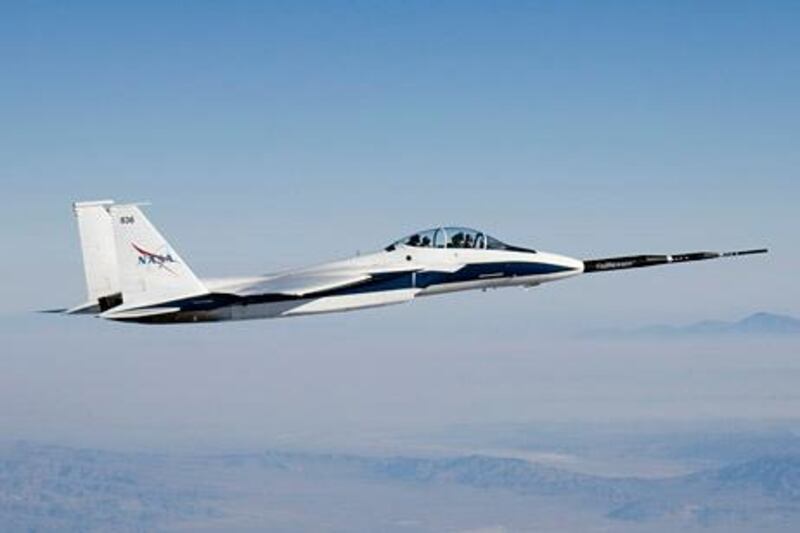If you were standing on the ground, and a Gulfstream supersonic business jet of the future, fitted with its patented “quiet spike” flew overhead at Mach 1.8 – that’s one point eight times the speed of sound – you would barely hear it whisper.
Until now, any jet breaking the sound barrier would normally generate a boom loud enough to frighten the children and a shockwave severe enough to rattle the windows.
But over a decade of research by plane makers such as Gulfstream Aerospace is now starting to deliver the technology necessary to make commercial supersonic flight a reality once again – if only in the private jet market.
Key to their work has been the design of the jet’s nose and engine nacelles, the outer casing that encloses the engine core, which are the surfaces that effectively stretch and then tear the air ahead of the aircraft as it passes through the sound barrier at 1,220kph, otherwise known as Mach 1.
Gulfstream’s Quiet Spike is essentially a retractable nose tip that changes the shape of a traditional sonic boom pressure wave as it builds up in front of the jet so that when it passes Mach 1, the “boom” is quieter than the thunderclap made by Concorde by a factor of 10,000, according to Gulfstream.
“We’ve essentially taken the boom out of sonic boom,” according to a Gulfstream spokesman. “[The boom] is so indistinct that most people on the ground wouldn’t even realise a supersonic aircraft had passed overhead.”
Gulfstream has also patented an engine design that contributes to addressing the acoustic signature of supersonic flight, by shaping the nacelle to reduce sonic-boom strength, and drag on the jet’s airframe.
Drag is another problem. As an aircraft approaches supersonic speed, the pressure wave it generates creates drag. To offset the drag, the aircraft engine needs to create extra thrust and that dramatically boosts fuel consumption. An aircraft accelerating from Mach 0.085 to Mach 1.7 will quadruple its fuel consumption.
However, Preston Henne, a Gulfstream executive, said the company’s work on the Rolls-Royce Tay engines powering the current G450 business jet is a viable option for supersonic speed. The Tay is a modified Spey engine, designed for the Royal Air Force to power its McDonnell Douglas F-4 Phantom squadrons in the 1970s. Another engine option is the Rolls-Royce BR725 engine installed on the Gulfstream G650.
Nasa is also confident that routine supersonic overland flight is within reach. The breakthrough is expected, however, to prove taxing for regulators as supersonic flight is banned over many countries.
Wind-tunnel tests last year of Boeing and Lockheed Martin concepts for small supersonic airliners showed aircraft can now be designed that combine both low boom and low drag.
Until now “boom” and good performance have been mutually exclusive, but, “we have broken that paradox,” said Peter Coen, manager of Nasa’s supersonic fixed-wing programme. “We achieved low boom with good supersonic-cruise lift-to-drag ratio.”
Gulfstream is not alone in seeking to bring a supersonic business jet to market.
"There's been an industry push to bring supersonics to the forefront of research to develop a sonic-boom standard and a rule governing environmentally efficient supersonic flight over land," the Gulfstream spokeswoman Heidi Fedak said. "The need for speed, the next technological step in air travel, is also driving research," she added.
dblack@thenational.ae





